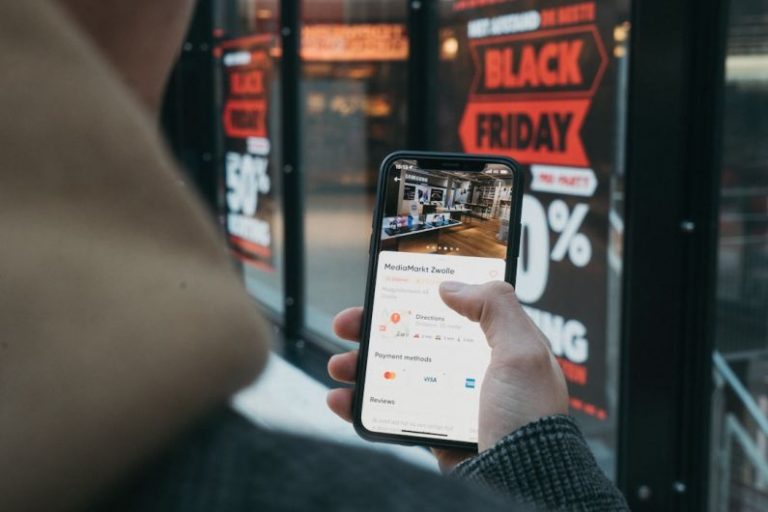The Psychology of Shopping: Why We Buy
Understanding the Psychology of Shopping: Why We Buy
Have you ever found yourself standing in front of a display, contemplating whether to purchase that pair of shoes or that new gadget? The decision-making process behind why we buy is a complex interplay of psychological factors that influence our behavior as consumers. From the moment we enter a store or browse online, our minds are constantly processing information that shapes our shopping habits. Let’s delve into the fascinating world of consumer psychology to uncover the reasons behind our purchasing decisions.
The Power of Emotions in Shopping
Emotions play a significant role in influencing our shopping behavior. When we shop, our emotional state can greatly impact what we choose to buy. Marketers understand this phenomenon and often use emotional appeals in advertising to connect with consumers on a deeper level. Positive emotions such as happiness, excitement, or even nostalgia can trigger impulsive buying decisions. On the other hand, negative emotions like stress or sadness may lead us to seek comfort through retail therapy. By tapping into our emotions, brands can create strong associations between their products and our feelings, making us more likely to make a purchase.
The Influence of Social Proof
Humans are social creatures, and we are heavily influenced by the actions of others. The concept of social proof suggests that people tend to follow the crowd, especially when they are unsure about a decision. This principle is commonly seen in the form of customer reviews, testimonials, or endorsements from influencers. When we see others endorsing a product or service, we are more inclined to trust their judgment and make a similar purchase. The fear of missing out (FOMO) also plays a role in our shopping decisions, as we don’t want to feel left out or behind the trends.
The Art of Persuasion through Marketing Techniques
Marketing techniques are designed to persuade consumers to buy a particular product or service. One of the most common tactics used by marketers is creating a sense of urgency through limited-time offers, flash sales, or countdown timers. By instilling a fear of missing out, companies can push consumers towards making a quick purchasing decision. Additionally, the use of persuasive language, compelling visuals, and strategic pricing strategies can influence how we perceive a product and its value. Understanding these marketing ploys can help consumers make more informed choices when faced with tempting offers.
The Role of Cognitive Bias in Decision Making
Cognitive bias refers to the tendency of our brains to make systematic errors in judgment based on subjective factors. When it comes to shopping, cognitive biases can significantly impact our decision-making process. For example, the anchoring bias occurs when we rely too heavily on the first piece of information we receive, such as the original price of an item before a discount. This can influence our perception of the deal and lead us to make a purchase based on the perceived savings rather than the actual value of the product. Being aware of these biases can help us make more rational shopping decisions and avoid falling into common traps set by marketers.
Creating a Personalized Shopping Experience
In today’s digital age, data-driven personalization has become a key strategy for retailers to tailor their offerings to individual consumers. By analyzing our browsing history, purchase patterns, and demographic information, companies can create personalized recommendations that cater to our preferences. This level of customization not only enhances the shopping experience but also increases the likelihood of making a purchase. As consumers, we are drawn to products and services that align with our unique tastes and interests, making us more likely to engage with personalized content.
The Future of Shopping: Trends and Innovations
As technology continues to advance, the landscape of shopping is evolving rapidly. From augmented reality fitting rooms to voice-activated shopping assistants, innovative tools are reshaping the way we interact with brands and make purchases. E-commerce platforms are leveraging artificial intelligence to provide personalized recommendations in real-time, while brick-and-mortar stores are incorporating interactive displays to enhance the in-store experience. With the rise of social commerce and influencer marketing, the boundaries between online and offline shopping are blurring, creating new opportunities for brands to connect with consumers in meaningful ways.
Embracing Conscious Consumerism
In an age of abundance, consumers are becoming more conscious of the impact of their purchasing decisions on the environment, society, and their own well-being. The rise of ethical and sustainable shopping practices reflects a growing awareness of the importance of making responsible choices as consumers. Brands that prioritize transparency, sustainability, and social responsibility are gaining traction among consumers who seek to align their values with their purchasing behavior. By supporting ethical brands and opting for quality over quantity, consumers can contribute to a more sustainable and mindful approach to shopping.
In Summary: Understanding the Psychology of Shopping
The psychology of shopping is a multifaceted field that encompasses a wide range of factors influencing our buying behavior. From the power of emotions and social proof to the art of persuasion and cognitive biases, there are numerous psychological principles at play when we make purchasing decisions. By being aware of these factors and understanding how they influence our behavior, we can become more informed and empowered consumers. As the shopping landscape continues to evolve, embracing conscious consumerism and making mindful choices can have a positive impact on our lives and the world around us. Next time you find yourself reaching for that tempting item, take a moment to reflect on the psychology behind your decision and make a choice that resonates with your values and preferences.






